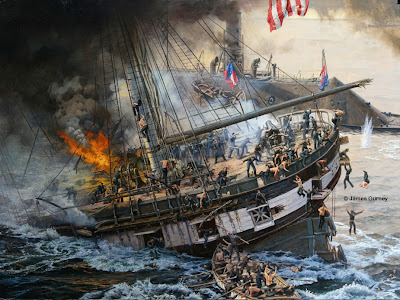 |
| The Bath, (Baño or Jávea), 1905 by Joaquín Sorolla y Bastida (Spanish, 1863–1923) |
The shift from warm to cool occurs both in the figure in the foreground and in the rocks in the background. The reason for the shift in color temperature is that the up-facing planes pick up more of the sky color and the down-facing planes receive more of the ground color. The actual color mixture is a combination of the surface color of the skin and the color of the light striking it.
One last thing to note is that the warm/cool shifts in the shadow planes can occur at nearly equal value, and it's often very effective to paint them that way.
------
Oil on canvas; 35 1/2 x 50 1/2 in. (90.2 x 128.3 cm)
One last thing to note is that the warm/cool shifts in the shadow planes can occur at nearly equal value, and it's often very effective to paint them that way.
------
Oil on canvas; 35 1/2 x 50 1/2 in. (90.2 x 128.3 cm)
The painting is in the Metropolitan Museum collection, though not on view now.
High res file available from Wikimedia Commons
Sorolla book: Sorolla: The Masterworks
My book on Amazon: Color and Light: A Guide for the Realist Painter
My book on color, signed for you
High res file available from Wikimedia Commons
Sorolla book: Sorolla: The Masterworks
My book on Amazon: Color and Light: A Guide for the Realist Painter
My book on color, signed for you












































